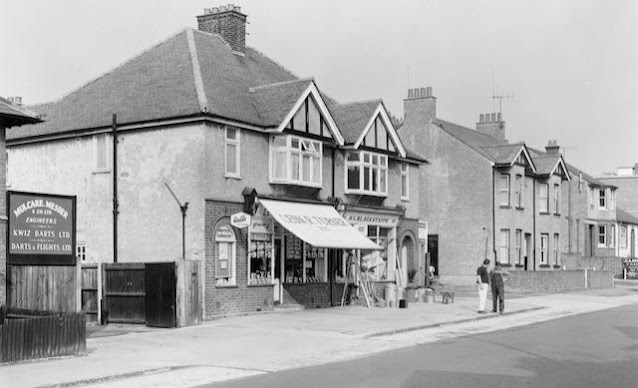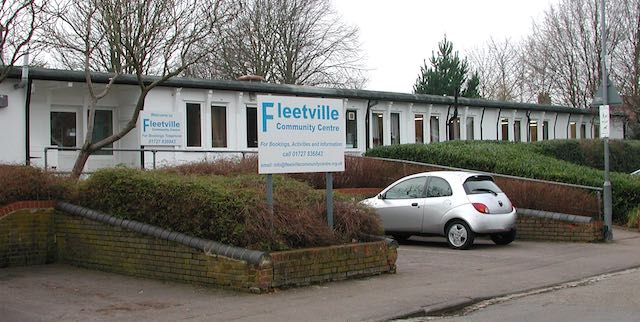You can imagine that, as soon as the western part of Beaumonts Farm was offered for sale in 1899, development plans emerged along the Hatfield Road's north side frontage. To begin with it was probably limited to a few marker posts in the ground at the eastern end where land narrowed towards Beaumont Avenue. Almost immediately a six roomed villa was erected (number 385 before the 1930 re-numbering, and named Innerleithen). From new until a few years ago it has only been occupied by two households, William Cowley, an elementary school teacher until around 1919; and then George Butlin followed by his daughter, Doris.
 |
| The five villas erected prior to 1910. COURTESY GOOGLE STREETVIEW |
In our previous post we noted the growth of the former Currell's garage and the widening of its plot to accommodate, initially an exit drive for the British Road Services trucks, and later a further property for parking up a number of cars – still used for this function today. The two properties absorbed in this way had been occupied by George A Curgenven, a railway engine driver, and next door in a bungalow, his son Arthur George Curgenven, who was a postman. The properties are visible on the extreme right of the middle image in the previous post, but both had been demolished in the 1950s and 1970s respectively.
We are therefore left with a sizeable site bounded in red on the map above and on it arrived two villas (framed in blue) somewhat larger than the earlier five to the east: 383 named Balgowan as early as 1903 and 381, named Waratah a couple of years later. It seems inevitable that both, with their expansive gardens, orchard and tennis court, would eventually be ripe for further development. A development company known as Parkfield Developments acquired the legal and financial interests in both properties and submitted proposals in 1935 for a number of shops fronting Hatfield Road, an access road and blocks of flats between the shops and the Alley.The Council, empowered by a number of town planning acts in the 1920s and 30s, considered the applications and refused them in 1935, and again in 1937; making it clear it thought Fleetville already had enough shops and adding more would contravene the Ribbon Development Act. Quite apart from the safety issues around the proposed access road, and close to the busy lorry access road.
Parkfield, in an apparent attempt to force the issue, began the process of demolishing the existing houses, although site clearance was not complete by the declaration of war in 1939. The Council acquired the site as a base for the emergency National Fire Service and a building was quickly put up on the west side of the site.
 |
| The eastern block of the award-winning Queen's Court. |
 |
| Both the Fleetville branch library (shown here) and Cell Barnes Lane branch library are now closed. |
 |
| The former library site, at the western edge of the site acquired by the city council. New flats built c2012. |
One small part of the site was reserved for a branch library when the city's libraries were under its control. This opened in 1959, having been lobbied for by ward councillors since the 1920s, but is now replaced by a small block of flats.
The whole of the north side of Hatfield Road has now been explored, from The Crown to Beaumont Avenue, which the author hopes readers have enjoyed. After a suitable interval we will turn our attention to the south side of the road from The Crown itself, along a similar distance to Ashley Road.


















































